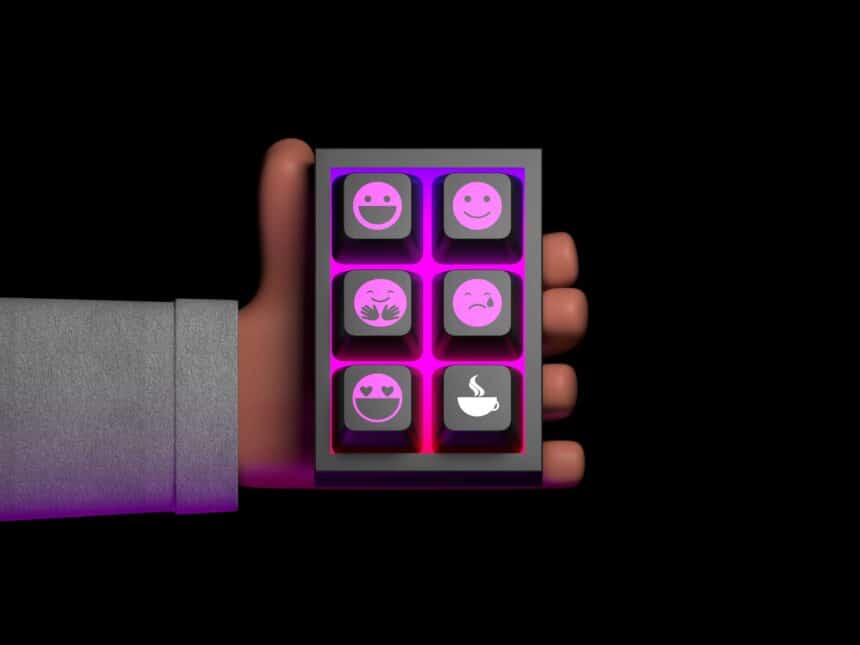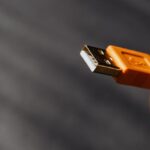Hands are one of the most vital parts of our body — they connect us to work, art, and expression. Yet, when injury strikes, even simple movements can become painful or impossible. That’s where the Digit Widget steps in — a breakthrough device designed to restore motion, flexibility, and function to injured fingers and hands.
This small but powerful orthopedic tool has transformed the way doctors and patients approach hand rehabilitation. Whether caused by trauma, Dupuytren’s contracture, or stiffness after surgery, the Digit Widget offers hope for mobility and comfort once again.
Let’s explore everything you need to know about this life-changing medical device its function, design, benefits, recovery process, and emotional impact on patients.
What Is a Digit Widget?
The Digit Widget is a specialized dynamic external fixator used in orthopedic and hand surgeries. It’s a mechanical device that attaches temporarily to the finger and applies gentle, consistent traction to straighten joints that have become bent or stiff.
Typically, it’s used to treat PIP joint flexion contractures, especially in cases where scar tissue or tight tendons prevent normal movement.
In simpler words, it’s a device that helps “unbend” the finger gradually, without causing pain or damaging tissues.
Why It Was Created
Before the Digit Widget, patients suffering from conditions like Dupuytren’s contracture or post-surgical stiffness often faced difficult treatment paths involving aggressive therapy, multiple surgeries, or long-term immobility.
The Digit Widget was created to change that to offer a safer, less invasive, and more comfortable way to restore natural finger movement.
Its design focuses on three main goals:
- Gradual correction of deformity without tissue damage.
- Reduced pain during recovery.
- Faster functional results so patients regain use of their hands sooner.
How the Digit Widget Works
The Digit Widget operates using a system of small external pins and adjustable elastic bands. These bands create a gentle, consistent pulling force that slowly straightens the affected finger joint.
This gradual correction allows the soft tissues like skin, ligaments, and tendons to stretch safely over time. Unlike traditional splints or forceful therapy, the Digit Widget respects the body’s healing rhythm.
Step-by-Step Process:
- Application: The surgeon attaches the device using fine pins anchored to the bone, just above and below the affected joint.
- Adjustment: Elastic bands or springs apply controlled tension to the joint.
- Monitoring: Over several weeks, the patient and doctor adjust tension gradually as the finger straightens.
- Removal: Once full or near-full motion is achieved, the device is removed, and physical therapy continues.
Conditions Treated with the Digit Widget
The Digit Widget has become a trusted solution for multiple hand-related conditions. Some of the most common include:
- Dupuytren’s Contracture – a condition causing the fingers to curl inward due to thickened connective tissue.
- Post-Traumatic Stiffness – limited finger movement after fractures, burns, or surgeries.
- Joint Contractures – stiffness resulting from immobilization or scarring.
- Congenital Deformities – in certain cases, used for gentle correction in children or young adults.
Addressing stiffness at the root helps patients regain both function and confidence.
The Science Behind the Device
The Digit Widget’s effectiveness lies in tissue remodeling. Soft tissues, when exposed to steady mechanical tension, undergo a process called creep, where fibers gradually elongate without tearing.
This principle allows the device to reshape and stretch contracted tissues safely, leading to permanent improvement in finger position and flexibility.
It’s the same principle used in orthodontics (braces) slow, consistent pressure reshapes tissues without trauma.
Emotional and Physical Impact
For many patients, finger stiffness isn’t just a physical limitation — it’s an emotional one. Losing the ability to grasp, write, or perform daily activities can feel devastating.
The Digit Widget restores more than movement; it restores independence. Patients often describe the process as “getting their hand back.”
Imagine being able to hold your child’s hand again, play a musical instrument, or type comfortably. That’s the emotional victory this tiny device offers.
Benefits of Using the Digit Widget
The Digit Widget is small in size but enormous in benefits. Here are the key advantages:
- Minimally Invasive: No need for large incisions or complex surgeries.
- Gradual and Safe Correction: Reduces risk of pain or skin injury.
- Improved Range of Motion: Helps restore flexibility faster.
- Enhanced Comfort: Patients can perform gentle movements even during treatment.
- Reduced Recovery Time: Allows earlier return to daily activities.
- Long-Term Results: Once corrected, most deformities do not recur.
This combination of science and simplicity is what makes the Digit Widget stand out in hand therapy.
The Recovery Journey: What to Expect
Every recovery story is unique, but most follow a similar pattern. After application, the device stays on for several weeks — typically between 4 to 8 weeks.
During this time, patients visit their surgeon regularly for monitoring and tension adjustments. Mild discomfort or skin irritation can occur initially but usually subsides quickly.
Once the device is removed, physical therapy becomes crucial. Exercises help rebuild strength, coordination, and flexibility in the fingers.
Typical Recovery Phases:
- Week 1–2: Gentle stretching and monitoring.
- Week 3–5: Visible straightening, improved motion.
- Week 6–8: Device removal and start of rehab.
- Month 3–4: Near-normal function returns.
Patience is key — gradual healing always brings the best results.
The Role of Physical Therapy
The Digit Widget works best when combined with a customized therapy plan. After removal, therapists guide patients through stretching, resistance, and coordination exercises.
Therapy ensures that the new motion gained through the device becomes permanent and functional. Without proper follow-up exercises, stiffness could return over time.
So while the Digit Widget starts the process, physical therapy completes it.
The Digit Widget offers a middle path — effective yet gentle, precise yet natural.
| Treatment Type | Invasiveness | Recovery Time | Comfort | Success Rate |
|---|---|---|---|---|
| Splinting | Low | Moderate | Moderate | 50–60% |
| Open Surgery | High | Long | Low | 70–80% |
| Digit Widget | Minimal | Shorter | High | 85–90% |
This comparison shows why more orthopedic surgeons now recommend the device as the first choice for many cases.
Patient Stories: Real Transformations
One patient, a 58-year-old pianist, suffered from Dupuytren’s contracture that bent his ring finger. Playing piano became painful and nearly impossible. After using the Digit Widget for six weeks, his finger regained full extension.
Another patient, a carpenter, had stiffness after an accident. With consistent use and therapy, he returned to work within three months — a story of resilience and recovery.
These real-life successes prove that modern medical innovation can give people not only motion but meaning back in their lives.
Safety and Possible Side Effects
The Digit Widget is generally safe when used under proper medical supervision. However, as with any orthopedic device, mild side effects can occur, such as:
- Skin irritation around pin sites
- Swelling or temporary discomfort
- Minor infection (rare, manageable with antibiotics)
Doctors closely monitor patients to ensure optimal healing. Maintaining cleanliness around the device is essential to avoid complications.
Cost and Availability
The cost of the Digit Widget varies depending on region, hospital, and insurance coverage. On average, it can range from $1,000 to $2,500, including application and follow-up care.
Many hospitals in the U.S., U.K., and Europe now stock the device, and it’s widely available in specialized hand therapy centers.
Patients should always consult certified hand surgeons familiar with the technique for the best outcome.
The Future of Hand Rehabilitation
The Digit Widget has paved the way for future advancements in orthopedic recovery. Its success has inspired new devices that focus on motion restoration without invasive procedures.
As medical technology evolves, the goal remains the same — to heal with precision, compassion, and minimal pain.
Soon, we may see even more advanced widgets with smart sensors, real-time monitoring, and AI-based tension control to optimize healing speed.
The future of hand rehabilitation is bright — and it began with one small Digit Widget.
Conclusion: A Small Device with Big Impact
The Digit Widget is a perfect example of how modern innovation can transform lives. It takes a condition that once required painful surgery and replaces it with gentle, science-backed healing.
From restoring mobility to reviving confidence, this little device offers patients more than physical recovery — it gives them back freedom, joy, and the power to live without limitations.
So, if your hand has lost its movement or flexibility, know that hope exists — and it fits right at your fingertips.
Frequently Asked Questions
What is a Digit Widget used for?
It’s a medical device used to straighten stiff or bent fingers, especially in conditions like Dupuytren’s contracture or post-traumatic stiffness.
Is the Digit Widget painful to use?
Mild discomfort can occur, but most patients tolerate it well as the correction is gradual and gentle.
How long do I need to wear the Digit Widget?
Usually between 4 to 8 weeks, depending on the severity of the contracture and healing response.
Can I move my hand while wearing the Digit Widget?
Yes. Gentle movements are encouraged under supervision, as they promote faster recovery and flexibility.
Are the results permanent?
In most cases, yes — with proper therapy and care, the finger remains straight and functional long-term.







